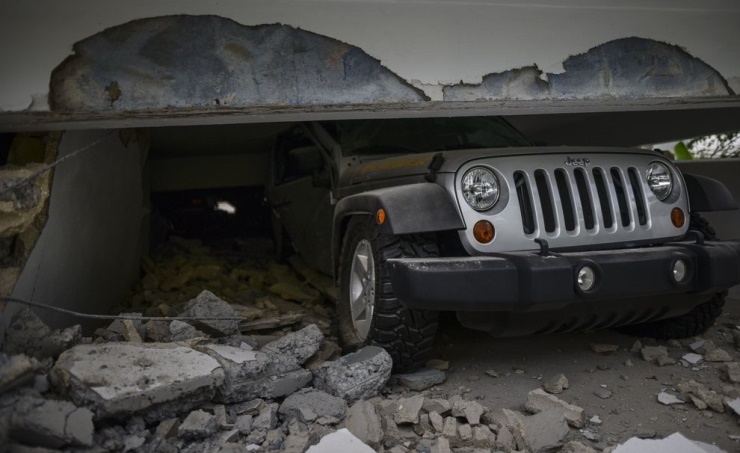Experts warn Puerto Rico not prepared for big earthquakes
More than two years ago, Hurricane Maria revealed that Puerto Rico was utterly unprepared for a powerful hurricane despite its location in one of the world’s most storm-vulnerable regions.
Now, a flurry of earthquakes topped by a magnitude 6.4 temblor that killed one person and damaged hundreds of buildings has many accusing the government of being caught unready again, according to The Associated Press (AP).
“It proved that Puerto Rico is not prepared for a seismic movement,” said Nazario Lugo, president of the island’s Association of Emergency Managers. “The government has to be proactive, and we saw that was not the case until they were up to their neck in water.”
Lugo, a former emergency management director for Puerto Rico, told the AP that the government didn’t activate its emergency command center until the day after the largest quake hit, breaking with protocol.
This drew comparisons to Hurricane Maria of 2017, which devastated the island and caused thousands of deaths. Critics said it caught the local and federal governments with limited supplies on an island with poorly maintained infrastructure and led to a delayed response stemming from a lack of communication and organization.
A flurry of hundreds of small quakes began hitting Puerto Rico on December 28, and a magnitude 5.8 jolt that toppled a famed rock formation landmark struck on Jan. 6, Three Kings’ Day, a major holiday on the island.
Just days after the natural disaster, emergency management Director Carlos Acevedo acknowledged to reporters that the government had yet to complete a plan that dictates protocol for when an earthquake hits the island.
Juan Alicea, president of Puerto Rico’s Society of Professional Engineers, told the AP that he received a draft of the plan only on Jan. 5.
“I see that as a failure,” he said. “We all have to assume our responsibilities.”
Acevedo did not return messages for comment and has insisted that Puerto Rico is prepared in case another big quake strikes.
Von Hillebrandt partially agreed with that assessment, noting that local officials had identified all tsunami risk zones by 2003 and completed evacuation maps in 2015. By 2016, all coastal communities in Puerto Rico were certified as being ready for a tsunami.
In October 1918, a magnitude 7.3 quake struck near Puerto Rico’s northwest coast, unleashing a tsunami and killing 116 people.
While concerns remain about Puerto Rico’s preparedness, federal authorities have praised the local government’s response.
Jeff Byard, with the US Federal Emergency Management Agency, said he is extremely pleased with the post-quake operation.
“I cannot commend the commonwealth enough for the proactive nature that they’ve taken providing the initial resources, the initial support,” he said.
More than 1,280 earthquakes have hit Puerto Rico’s southern region since December 28, more than two dozen of them magnitude 4.5 or greater, according to the US Geological Survey.
Alicea said it’s extremely worrisome that some 200,000 homes across Puerto Rico are not built to code, as evidenced by the damage caused in recent days.
“If we don’t take action, this is going to cost us a lot of money and a lot of lives,” he said.
Also of concern is that some 500 public schools across Puerto Rico were built before 1987 and don’t adhere to new construction codes, placing students at risk, according to Alicea.
He said the government has invested money to bring many other schools up to date, but the remaining ones are not built to withstand earthquakes.
Tuesday’s quake flattened several schools and damaged an estimated two dozen overall, forcing education officials to postpone the start of classes by two weeks and only open schools that have passed inspection. Government officials have said they are identifying the most vulnerable schools and creating a plan to strengthen them, a process that could take months and cost between $1 million and $5 million per school.
Related Posts

